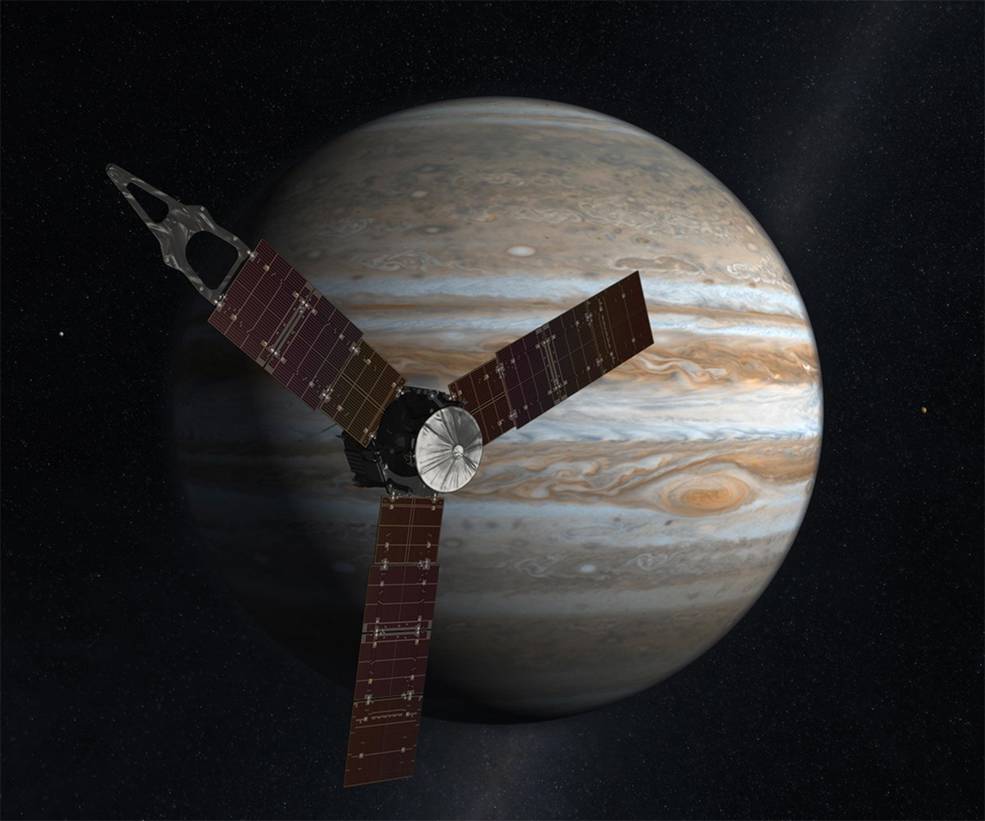Juno Mission

NASA's Juno Mission was launched in August 2011 and reached the planet Jupiter in July 2016 to reveal the origins and evolution of Jupiter with the aim of understanding the origin of the solar system. Jupiter as the prime example of a giant planet can provide crucial insights for planetary systems orbiting other stars.
Using scientific instruments, Juno Mission can discover the existence of a core of heavy elements, map Jupiter's intense magnetic field, measure the amount of water and ammonia in the deep atmosphere, and observe the planet's aurora.
Contact
Prof. Dr. Ravit Helled
Institute for Computational Science
Center for Theoretical Astrophysics & Cosmology
University of Zurich, Winterthurerstr. 190, CH-8057 Zurich
+41446356189
www.ics.uzh.ch/~rhelled
rhelled@physik.uzh.ch
Research of Prof. Dr. Ravit Helled
Planets are common astronomical objects that appear in a variety of forms. Today, about 4000 planets orbiting around other stars (known as exoplanets) have been detected.
Even within our Solar-System, which includes only eight planets, we observe significant differences between the planets in terms of masses, radii, and compositions as well as other physical properties such as rotation rate, geophysical activity, magnetic fields, etc.
In my research I investigate different planetary formation mechanisms and evolutionary paths, and explore the possible internal structures and compositions. I am particularly interested in giant planets which shape the architecture of young planetary systems due to their large masses, fast formation, since they provide information on the physical and chemical properties of protoplanetary disks, where planets form.
Although research on the origin of the solar system and planet formation and characterization has been carried since a few decades, many open questions remain. My research aims at addressing the following questions:
- How do planets form and evolve?
- How can we link planetary composition with planet formation?
- What are the compositions of the planets in our Solar System?
- What are exoplanets made of?
- Is our Solar System unique?
While my research is mostly theoretical/numerical, several aspects of it relate to the interpretation of the measurements from space missions dedicated to Solar System exploration and exoplanets. I am a science team member of the NASA Juno mission and a Co-Investigator in the ESA JUICE mission. I am also involved in exoplanet ESA missions such as PLATO and ARIEL. My investigations are used to guide the measurements and for the interpretation of the data.